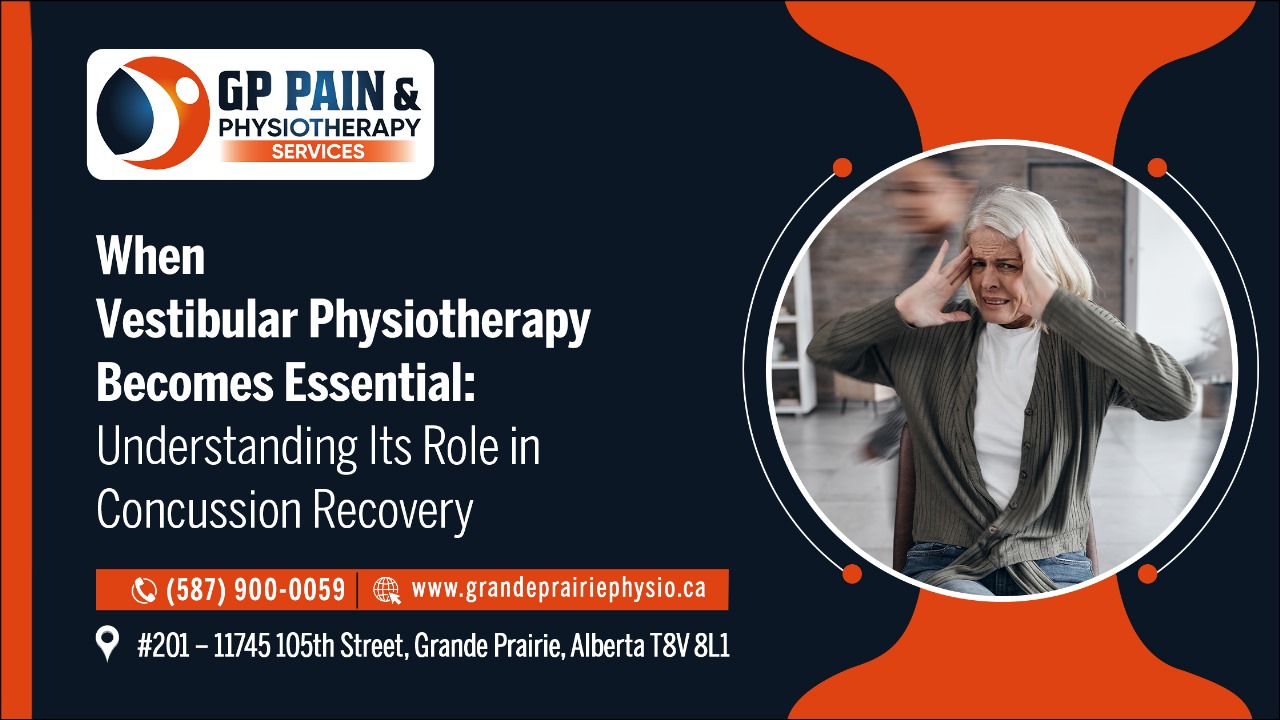
Feeling dizzy, off-balance, or disoriented can be incredibly unsettling. Vestibular dysfunction, often caused by issues within the inner ear, can lead to balance problems and a reduced quality of life. At GP Pain & Physiotherapy, we emphasize the importance of Vestibular Physiotherapy Grande Prairie, but there are simple exercises you can try at home to help manage your symptoms. Always consult with a physiotherapist before starting these exercises to ensure they are appropriate for your condition.
Understanding Vestibular Rehabilitation
Vestibular rehabilitation is a specialized form of therapy designed to alleviate dizziness, improve balance, and reduce related symptoms like nausea or blurred vision. It works by retraining your brain to use information from the inner ear and other senses to maintain balance and stability. Below is a DIY vestibular workout routine you can incorporate into your daily life to help manage vestibular dysfunction.
Gaze Stabilization Exercise
This exercise can be particularly helpful for people who experience dizziness when turning their head.
How to Do It:
-
Sit or stand comfortably.
-
Hold an object, like a pen, at arm’s length in front of you at eye level.
-
Keep your eyes on the object and slowly move your head from side to side. Aim to move your
-
head for 30 seconds while keeping the object in focus.
-
Repeat this exercise 3–5 times a day, gradually increasing the duration.
Standing Balance Exercises
These exercises can help improve your overall stability and balance.
Heel-to-Toe Walk:
Repeat this exercise 3 times, and as you progress, try walking backward using the same heel-to-toe pattern.
Single Leg Stance:
Lift one leg off the ground and hold your balance on the other leg for 10–30 seconds.
Switch legs and repeat 3–5 times per leg. As your balance improves, try doing this exercise without holding onto anything.
Brandt-Daroff Exercises
These exercises help your brain get used to the sensation of vertigo and can be useful if you experience dizziness due to positional changes.
How to Do It:
Quickly lie down on your right side, turning your head so you’re looking up at the ceiling. Hold this position for 30 seconds or until the dizziness subsides.
-
Return to the seated position and rest for 30 seconds.
-
Repeat on the left side.
-
Perform this sequence 5 times on each side, twice a day.
Tips for Safe Practice
Start slow: Begin with shorter durations and fewer repetitions.
Have a support person: If you are prone to severe dizziness or falls, have someone nearby while you perform these exercises.
Stay hydrated: Dizziness can sometimes worsen with dehydration, so make sure you are well-hydrated before beginning.
When to Seek Help
If your symptoms persist or worsen, it’s crucial to consult with a physiotherapist. At GP Pain & Physiotherapy, we offer comprehensive vestibular rehabilitation tailored to your specific needs. Our experienced team can help guide you through exercises safely and make modifications as necessary to ensure the outcomes.
Conclusion
With consistent practice and guidance from a professional, DIY vestibular exercises can be a valuable part of your home care routine. Remember, vestibular rehabilitation is most effective when done in combination with professional treatment. If you’re experiencing chronic dizziness or balance issues, contact G P Pain & Physiotherapy in Grande Prairie for expert support and personalized care.
#vestibularphysiotherapygrandeprairie #vestibularphysiotherapy #vestibularphysiotherapynearme #vestibularphysiotherapy #gppainphysicaltherapy #grandeprairiephysiotherapy #physiotherapynearme #physiotherapygrandeprairie #physicaltherapygrandeprairie #physicaltherapynearme #physicaltherapy #physiotherapistclinic #physiotherapytclinic #physicaltherapyclinic #vestibularrehabilitation
#vestibularrehabilitationtherapy #vertigophysiotherapy #dizzinessphysiotherapy